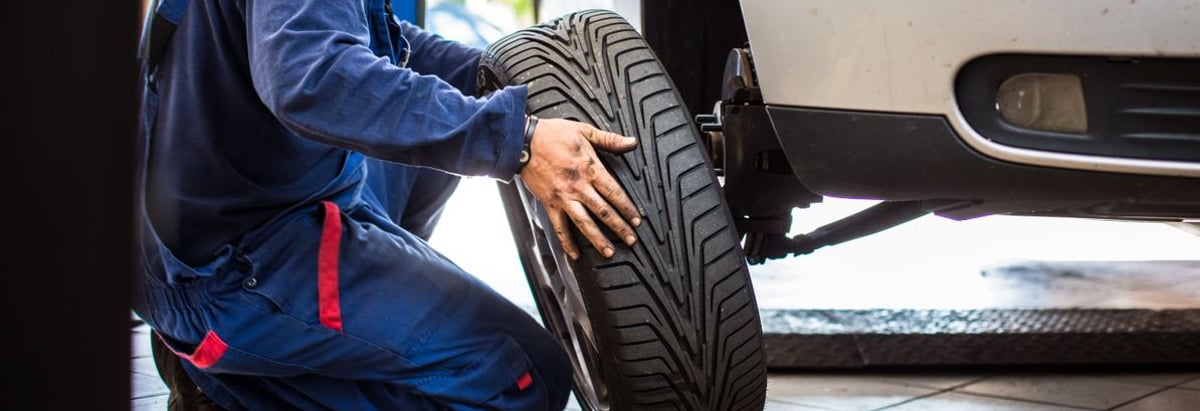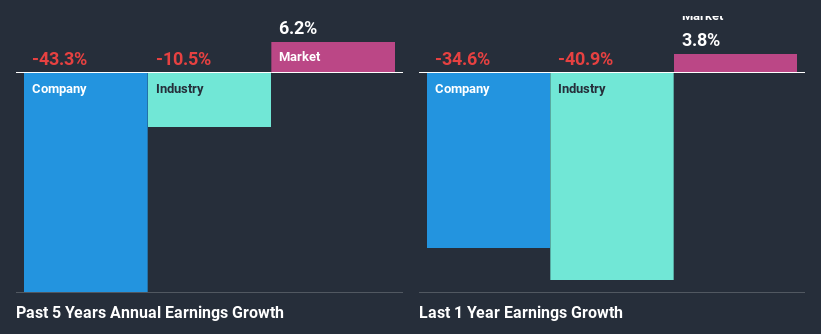- Taiwan
- /
- Auto Components
- /
- TWSE:2106
Is Kenda Rubber Industrial Co. Ltd.'s (TPE:2106) Recent Performancer Underpinned By Weak Financials?

It is hard to get excited after looking at Kenda Rubber Industrial's (TPE:2106) recent performance, when its stock has declined 12% over the past month. We decided to study the company's financials to determine if the downtrend will continue as the long-term performance of a company usually dictates market outcomes. Specifically, we decided to study Kenda Rubber Industrial's ROE in this article.
Return on equity or ROE is a key measure used to assess how efficiently a company's management is utilizing the company's capital. In simpler terms, it measures the profitability of a company in relation to shareholder's equity.
Check out our latest analysis for Kenda Rubber Industrial
How Do You Calculate Return On Equity?
Return on equity can be calculated by using the formula:
Return on Equity = Net Profit (from continuing operations) ÷ Shareholders' Equity
So, based on the above formula, the ROE for Kenda Rubber Industrial is:
3.6% = NT$675m ÷ NT$19b (Based on the trailing twelve months to September 2020).
The 'return' is the profit over the last twelve months. Another way to think of that is that for every NT$1 worth of equity, the company was able to earn NT$0.04 in profit.
Why Is ROE Important For Earnings Growth?
We have already established that ROE serves as an efficient profit-generating gauge for a company's future earnings. We now need to evaluate how much profit the company reinvests or "retains" for future growth which then gives us an idea about the growth potential of the company. Assuming all else is equal, companies that have both a higher return on equity and higher profit retention are usually the ones that have a higher growth rate when compared to companies that don't have the same features.
Kenda Rubber Industrial's Earnings Growth And 3.6% ROE
On the face of it, Kenda Rubber Industrial's ROE is not much to talk about. A quick further study shows that the company's ROE doesn't compare favorably to the industry average of 5.1% either. Therefore, it might not be wrong to say that the five year net income decline of 43% seen by Kenda Rubber Industrial was probably the result of it having a lower ROE. We believe that there also might be other aspects that are negatively influencing the company's earnings prospects. Such as - low earnings retention or poor allocation of capital.
Next, when we compared with the industry, which has shrunk its earnings at a rate of 11% in the same period, we still found Kenda Rubber Industrial's performance to be quite bleak, because the company has been shrinking its earnings faster than the industry.

The basis for attaching value to a company is, to a great extent, tied to its earnings growth. It’s important for an investor to know whether the market has priced in the company's expected earnings growth (or decline). By doing so, they will have an idea if the stock is headed into clear blue waters or if swampy waters await. Has the market priced in the future outlook for 2106? You can find out in our latest intrinsic value infographic research report
Is Kenda Rubber Industrial Making Efficient Use Of Its Profits?
Kenda Rubber Industrial's very high three-year median payout ratio of 106% over the last three years suggests that the company is paying its shareholders more than what it is earning and this explains the company's shrinking earnings. Paying a dividend higher than reported profits is not a sustainable move. Our risks dashboard should have the 3 risks we have identified for Kenda Rubber Industrial.
In addition, Kenda Rubber Industrial has been paying dividends over a period of at least ten years suggesting that keeping up dividend payments is way more important to the management even if it comes at the cost of business growth.
Summary
Overall, we would be extremely cautious before making any decision on Kenda Rubber Industrial. Particularly, its ROE is a huge disappointment, not to mention its lack of proper reinvestment into the business. As a result its earnings growth has also been quite disappointing. Until now, we have only just grazed the surface of the company's past performance by looking at the company's fundamentals. To gain further insights into Kenda Rubber Industrial's past profit growth, check out this visualization of past earnings, revenue and cash flows.
If you decide to trade Kenda Rubber Industrial, use the lowest-cost* platform that is rated #1 Overall by Barron’s, Interactive Brokers. Trade stocks, options, futures, forex, bonds and funds on 135 markets, all from a single integrated account. Promoted
Valuation is complex, but we're here to simplify it.
Discover if Kenda Rubber Industrial might be undervalued or overvalued with our detailed analysis, featuring fair value estimates, potential risks, dividends, insider trades, and its financial condition.
Access Free AnalysisThis article by Simply Wall St is general in nature. It does not constitute a recommendation to buy or sell any stock, and does not take account of your objectives, or your financial situation. We aim to bring you long-term focused analysis driven by fundamental data. Note that our analysis may not factor in the latest price-sensitive company announcements or qualitative material. Simply Wall St has no position in any stocks mentioned.
*Interactive Brokers Rated Lowest Cost Broker by StockBrokers.com Annual Online Review 2020
Have feedback on this article? Concerned about the content? Get in touch with us directly. Alternatively, email editorial-team (at) simplywallst.com.
About TWSE:2106
Kenda Rubber Industrial
Designs, manufactures, and trades in tires in China, the United States, Taiwan, and Vietnam.
Excellent balance sheet second-rate dividend payer.
Similar Companies
Market Insights
Community Narratives



